This week’s theme is berries. Our “Growing Minds Day by Day” educational resource lists are designed for families and educators.
Fresh blueberries, raspberries, and blackberries are some of the berries you’ll find at farmers markets in our Appalachian Grown region throughout the summer. Wild blueberries are native to North America, but they weren’t domesticated and grown commercially until the early twentieth century.
While blueberries grow on a bush, blackberries and raspberries are sometimes referred to as cane fruits because they grow on biennial stems called “canes.” Berries are high in vitamins, antioxidants, and fiber, which makes them a highly nutritious snack. They’re also delicious when added to cereal, yogurt, salads, or baked goods. Fun fact: raspberries aren’t always red. There are yellow, purple, and black varieties, too!
Books:
 Wild Berries
Wild Berries
Our first recommendation this week is Wild Berries by Julie Flett. Readers of this simple and lovely story will spend the day picking wild blueberries with Clarence and his grandmother. Along the way, they’ll learn to observe nature closely, and meet an ant, spider, and fox in a beautiful woodland landscape, the ancestral home of Cree-Métis author and illustrator Julie Flett. This book is written in both English and Cree. It includes a pronunciation guide and a recipe for wild blueberry jam. Watch a read-aloud on YouTube.
 The First Strawberries
The First Strawberries
The First Strawberries is a Cherokee story, retold by Joseph Bruchac. This beautifully illustrated story tells the Cherokee origin legend of strawberries. Page by page, the fable unfolds with an easy to follow storyline and important accompanying moral—that friendship and respect are as sweet as the taste of ripe, red berries. Watch this read-aloud from the Tennessee State Museum on YouTube and learn the Cherokee word for “hello” at the end of the video. The First Strawberries is available to check out from our Growing Minds lending library.
Find more books
Looking for more garden-themed children’s books? Visit the Growing Minds’ farm to school literature database to browse our recommendations. Type “berries” into the search bar to find books that align with this week’s theme. Type “diversity” into the search bar to find books that feature characters from underrepresented racial and ethnic groups.
Local Food Recipes:
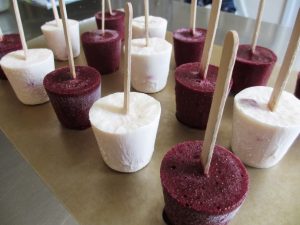 Local Berry Popsicles
Local Berry Popsicles
Makes 8-10
Who doesn’t enjoy a popsicle on a hot summer day? Try out our recipe for Berry Good Popsicles (Paletas de Bayas), featuring local berries of your choice. Ver esta receta en español.
Ingredients:
- 1 cup yogurt
- 1 cup local blueberries or blackberries
- 3-4 tsp. honey
- 1-2 Tbsp. lemon juice
- 2 ripe bananas (Don’t like bananas? Omit them and add ½ cup of milk or juice instead.)
- 8-10 paper cups and wooden popsicle sticks
Directions:
- In a blender, puree yogurt, honey, berries, and lemon juice.
- Add bananas (or milk/juice) and puree well.
- Spoon mixture into 8 to 10 small paper cups.
- Place foil over the top of each cup.
- Pierce the center of the foil and insert a wooden popsicle stick.
- Freeze popsicles for 5 to 6 hours.
- Before serving, dip cups in warm water for a few seconds, then remove the paper cups and foil and enjoy!
Build-Your-Own Salad with Blackberry Vinaigrette
Serves 4-6
Ingredients:
- 1 head local lettuce
- 1/4 lb. local spinach
- 1-2 carrots, grated
- 2 local salad turnips
- 1/4 pint blackberries
- 1/4 cup olive oil
- 1 1/2 tsp. red wine vinegar
- 1-2 Tbsp. local honey
- 1/4 tsp. salt
- 1/4 tsp. pepper
Directions:
- Wash, dry, and chop the lettuce, spinach, and turnips into bite-sized pieces. Divide lettuce between 4-6 small salad bowls.
- Give your child/children a salad bowl. Assist them in selecting additional ingredients (spinach, carrots, turnips) for their individual salads.
- Make the dressing by combining blackberries, vinegar, honey, salt, and pepper in a blender. Blend until well combined. With the blender running on low, slowly drizzle in the olive oil until incorporated.
- Give your child/children a portion of the dressing to try on their salad.
Looking for more ways to add local berries to your child’s meals?
- Gently fold 1/2 cup of fresh or frozen blueberries into a batch of muffin batter or pancake batter.
- Layer 1/2 cup fresh blueberries or blackberries with 1/2 cup vanilla yogurt and 2 Tbsp. granola for a tasty, healthy yogurt parfait.
- Serve them simply as they are at breakfast, lunch, or snack.
 Educational Resources:
Educational Resources:
Preschool Lesson Plans and Resources
- Local Berry Parfaits (Growing Minds)
- Local Berry Kabobs – Sequencing and Patterns (CFES)
Tips for Growing Blueberries from NC Extension
Guides for Growing Berries from KidsGardening.org
Activity:
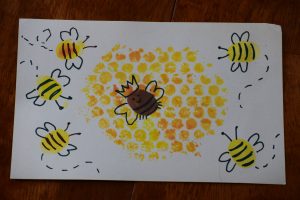 Just like other fruits we enjoy, the flowers of berry plants need to be pollinated by insects in order for the flowers to mature into fruits. Kids can celebrate this special relationship between bugs and berries by making fingerprint bees, butterflies, and beetles!
Just like other fruits we enjoy, the flowers of berry plants need to be pollinated by insects in order for the flowers to mature into fruits. Kids can celebrate this special relationship between bugs and berries by making fingerprint bees, butterflies, and beetles!
You’ll need the following supplies:
- watercolor paints and paint brushes
- paper
- markers or crayons
- bubble wrap
- scissors
First, prime watercolor paints by placing a bead of water on each color. Then have children stick their fingers or thumbs in a watercolor pan and make a thumbprint on the paper. When it dries, they can add lines for legs, wings, and antennae.
 Next, cut bubble wrap into the shape of beehives (large ovals or hexagons). Allow children to paint the bubble wrap (bubble side up) with orange and yellow paints. Guide them in pressing the painted bubble wrap onto paper. Next, children should dip their thumbs into yellow paint to create worker bees swarming the hive (and maybe an extra special queen bee inside the hive!). They can draw stripes and wings to transform their thumbprints into buzzing bees.
Next, cut bubble wrap into the shape of beehives (large ovals or hexagons). Allow children to paint the bubble wrap (bubble side up) with orange and yellow paints. Guide them in pressing the painted bubble wrap onto paper. Next, children should dip their thumbs into yellow paint to create worker bees swarming the hive (and maybe an extra special queen bee inside the hive!). They can draw stripes and wings to transform their thumbprints into buzzing bees.
Finally, cut the bubble wrap into the shapes of strawberries, raspberries, or blackberries and paint them with red, yellow, or purple paints to create bright, bumpy berry stamps. Once stamped, decorate your berries by adding stems and leaves.
 Summer Gardening Tips:
Summer Gardening Tips:
July is a great time to begin planning your family, school, or center’s fall garden. Seeds for cool weather crops like greens, cabbage, beets, beans, radishes, carrots, onions, turnips, and peas can all be planted in August for a fall harvest. Be sure to buy or place your fall seed orders soon so that you have them in time for planting next month.
Children (even young children) can and should be involved in every stage of planning a garden, from helping with its initial design to choosing the fruits and vegetables to plant. Activities to involve children in the planning process include:
- Discuss with children what plants need to grow and guide them in identifying several possible garden sites that would meet those needs.
- Lay out the garden with children. In designing a garden space, they can experiment with different measuring tools, like counting how many “feet” long the bed will be, or using rulers and tape measures.
- Help children flag or rope off the garden area so that they have a visual guide for where the garden will be.
- Provide children with seed catalogs to help them start thinking about all the different things they could grow. Using the pictures, guide children in making collages of their dream garden.
- Read garden related children’s literature to “research” what types of plants children could grow.
In mid-summer, after dinner gardening can be a great way to decrease screen time and get outside after the heat of the day has worn off. Spend some time together in the garden identifying which plants are weeds, and gently pull them out. Demonstrate watering and have your child carefully water the garden plants. Poke the soil to see how deep the water goes—evening watering is ideal because less water is lost to evaporation. The next morning, check the soil around the plants that were watered the previous evening—is it still moist?
You can also take steps now to extend the harvest of your summer garden. Picking spinach, runner beans, or French beans regularly while they are young encourages more to grow. Deadheading (or removing the faded blossoms from) annual flowers such as marigolds will help them continue to rebloom throughout the summer. As flowers fade, simply pinch or cut off the flower stem, just below the spent bloom and above the first set of leaves.
It’s also important to continue feeding compost to your tomato, cucumber, and peppers plants, and to tie them to garden stakes for support as they grow. Remove any withered or yellow leaves to prevent disease. Remove lower leaves from tomato plants to allow air to circulate. Water regularly.
—
That’s it for this week. Check back next week for new resources. Click here to access Day by Day resources from past weeks. If you didn’t find what you’re looking for here, please visit our Lesson Plans page.
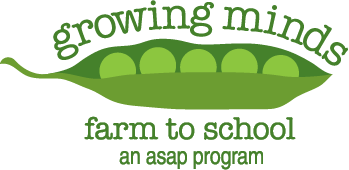
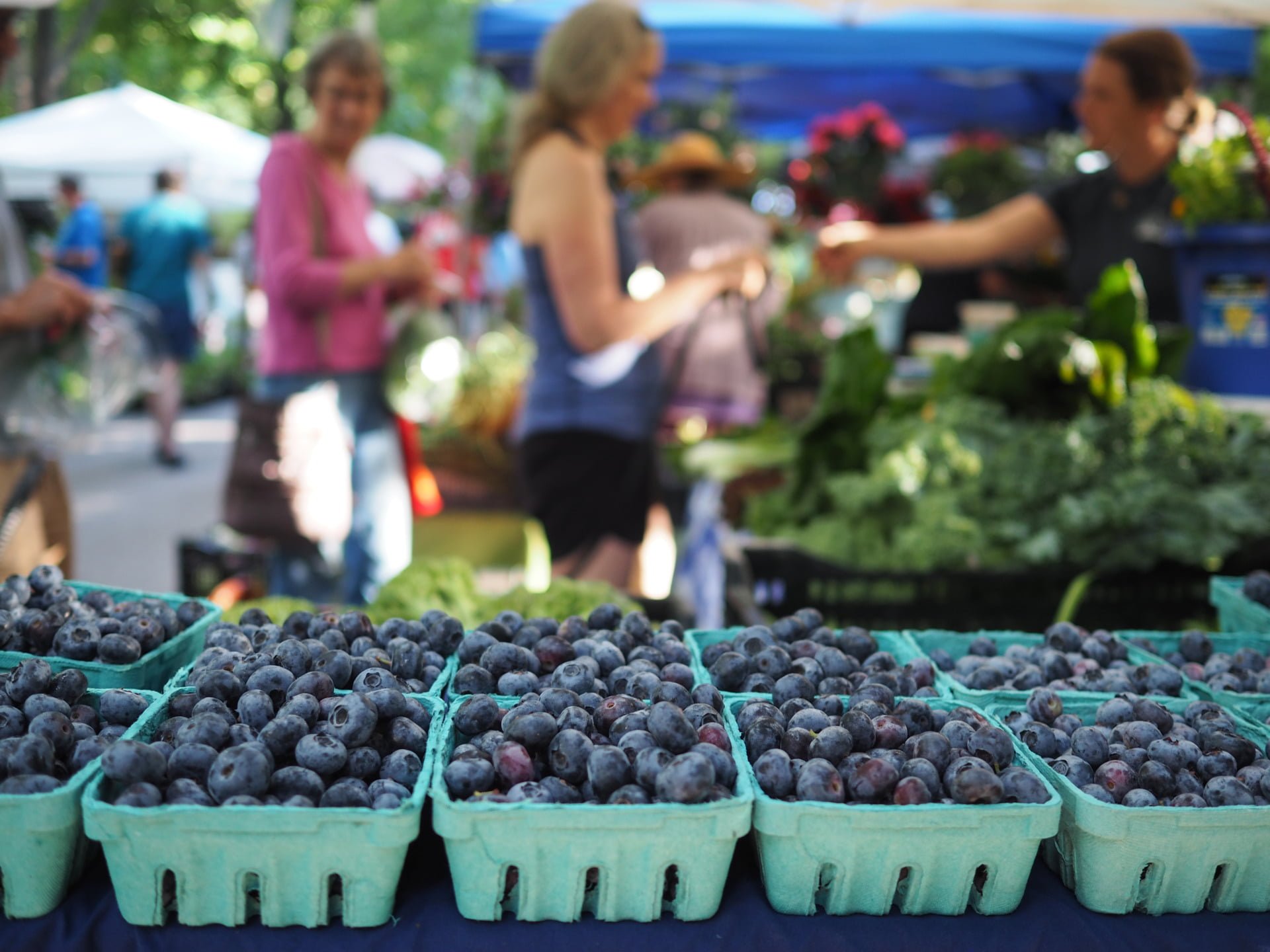
 Educational Resources:
Educational Resources: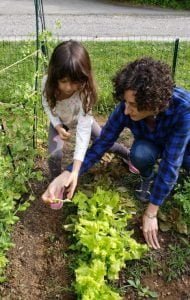 Summer Gardening Tips:
Summer Gardening Tips: